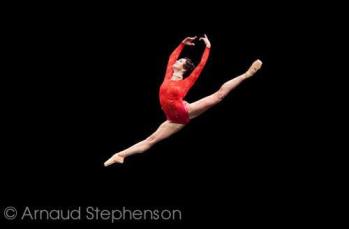Training to be a professional ballet dancer in Ireland is not easy. Unlike many other countries there is no nationally recognised ballet academy or any full-time ballet school for that matter. Although there are companies that engage professional dancers, though not on a year-round basis, to get to a level where employment is a viable option, training at a recognised vocational school abroad is the only option. So, with nowhere to get the requisite training and no companies able to provide some form of secure employment, you might be forgiven for thinking that ballet was a relatively novel pursuit in Ireland; curiously, that is not the case. Schools and companies have flourished in the past, organised and patronised by various well-connected members of the artistic community such as Ninette de Valois and W.B. Yeats, but the standing of ballet is more than likely worse now than it was 50 years ago.
A letter to The Irish Times, by Monk Gibbon, a poet and writer who had a deep interest in ballet, read thus:
Sir,
Your critic raises an issue of importance to all lovers of ballet in this country when he praises (November 11th) the really excellent programme of the National Ballet School and then asks: Quo Vadis?
We have now got a school of ballet, a teacher of ballet, and a number of young ballet-dancers, demonstrably comparable…to the London Standard. What is going to happen to them? Are we merely to become a recruiting ground for the big cross-Channel companies like Festival? Or is there a chance of keeping our young dancers here and enjoying the rich reward of the balletomane, of watching a striking talent develop and deepen over the years? The problem is a real one. I cannot see either Dublin or Cork maintaining as yet a permanent company, even with the aid of the provinces. Provincial Ireland is not yet ballet conscious. It will take time. But Covent Garden ballet today really originated with the Camargo Society, and owes everything to it. I suggest something on similar lines – guaranteeing an audience at fairly frequent intervals for a series of programmes which would include distinguished guest artists might, with the co-operation of the Arts Council, and one of the Dublin theatres, furnish a solution.
Or has anyone an alternative?
Yours, etc.,
Monk Gibbon1
With a few minor changes, this letter could have been written last week. It was, in fact, penned in 1958. Little has changed. The fact that there was a National Ballet School (founded in 1953 by Valentina Dutko and Cecil Ffrench – Salkeld and directed by Patricia Ryan until its demise in 1963) at the time, shows that we may even be less well-off now. Many dancers born here moved away to train and have found work abroad, in the absence of permanent work here: Sara Reynolds trained at Central School of Ballet and now works for Nederlands Dans Theater; Melissa Hamilton trained at Elmhurst and is a soloist with the Royal Ballet; Tracy Jones trained at the Royal Ballet School and dances for Ballet Barcelona. That is to name but a small few who are currently working abroad – in the decades since this letter was published, many more dancers left Irish shores to get their ballet education and stayed away, in the knowledge that living the life of a professional dancer at home was not a possibility.
Last year the previously titled Ballet Ireland became National Ballet of Ireland, although it still only operates for less than 6 months a year. Cork City Ballet operates for an even shorter period. Both companies source most of their dancers from overseas. The lack of continuity and paucity of home-grown talent do nothing for the cause of generating audiences.
On a more positive note, younger dancers are being fostered by organisations such as Irish National Youth Ballet, Youth Ballet West and Monica Loughman Ballet with many are getting to a level where they can enter full-time vocational training; Loughman is actually in the process of setting up vocational academy, but whether Irish parents will show any interest in paying €8000 a year in fees, when they see little evidence of employment opportunities at the other end.
I agree with Mr Gibbon in his suggestion of “fairly frequent intervals for a series of programmes”, as it would go a long way in educating audiences on the breadth of ballet but the Arts Council cannot be blamed for their scant interest in promoting what they see as classical ballet in the face of cutting edge contemporary art and theatre, as is their remit. At the other end of the spectrum lies the ballet going public, who like to be comforted with productions they know: Nutcracker will get will be a box-office hit, regardless of quality in a lot of cases, while a triple-bill of abstract work will no doubt leave the still “not yet ballet conscious” provincial audiences saying “that’s not ballet, there were no tutus”. Caught in the middle are the ballet companies, wondering who’s best to please.
Either way, the one-way traffic of indigenous talent will continue until dancers have some kind of job-security. Given the content of Mr Gibbon’s letter, some 54 years ago, and its resonance today, it’s very hard not to worry if the ballet ship has already sailed.
1 The Irish Times, 13 November 1958




